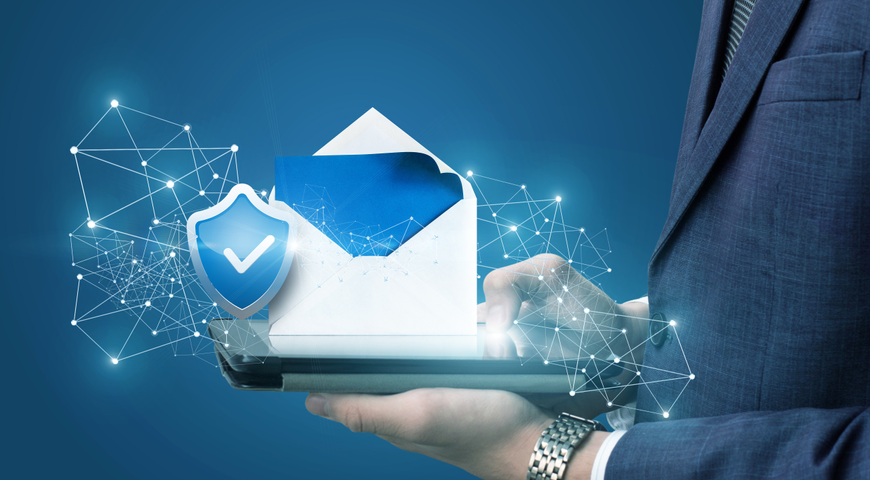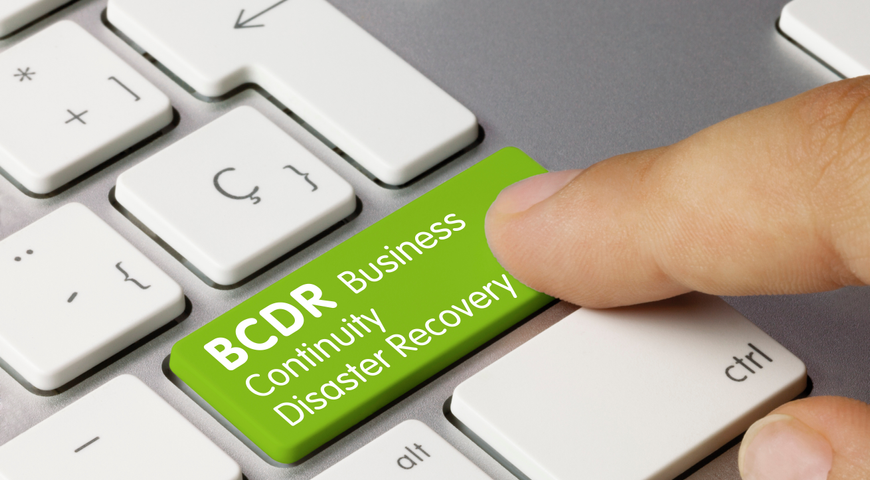
Have you ever thought about, how useful and important is the ability to communicate with emails? Nowadays, every person having access to the internet has his own private email address. It is one of the greatest benefits you can have. Every day we communicate via email messages with friends, colleagues, family, and business partners.
Some people even have multiple accounts, one for personal use, another for work, or business purposes and outbound communications. It is true that we have gotten used to communicate via email, and we got to a point where it would be impossible to imagine a world without emails.
This is one of the most useful services that the internet has provided us, making communication easy and fast. But with the benefits come risks, too. While we share our thoughts and feelings through our emails, we also certainly share and a lot of sensitive information, but often we underestimate the risk of becoming a victim of a cyber attack.
Cybercriminals are using emails to accomplish their criminal purposes and to gain benefits. They use phishing emails and malicious software to to gain unauthorized access to your login credentials, personal sensitive information and every valuable data they can get, with the main purpose of using it against you, for demanding ransom or stealing any type of financial information.
For sure, we can admit that these attacks are becoming meaner and more threatening every single day. The best thing we can do to protect our emails is to ensure robust email security provided by cybersecurity professionals, so we can rest calm and be confident that our valuable information, won't get into the wrong hands and be used against us. There are lots of examples of great business companies becoming victims of cyber-attacks and then never recovering from the damages they experienced. One of the main things we can not regain easily is clients' trust when being lost.
What Is Email Security?
Email security is the process of ensuring the availability, integrity, and authenticity of email communications by protecting against unauthorized access aiming to steal sensitive data and any other email threats. With billions of people and organizations relying on email to connect and exchange messages it has unfortunately become a target for attacks.
The main goal of security on email is to prevent these attacks and safeguard the integrity of email communication systems. Within the email security strategies that have been implemented by technology approaches and email service providers with the purpose of mitigating the risks associated with emails. These security protocols and approaches can be implemented by security teams and email servers like Microsoft Exchange and Microsoft 365 to ensure the secure transit of emails. Additionally, organizations and individuals can also utilize a secure email gateway to provide protection, against threats that may arise in emails.
Why Is Email Security Important?
Email security is an important aspect of protecting email accounts from becoming victim of cyber attacks by various mean methods like phishing emails, spam messages, phishing campaigns and any type of malicious code. By having the right security measures taken, you guarantee the safety of your personal information to remain confidential and available only for your eyes.
Enforcing email security safeguards sensitive data and ensures compliance with regulations, such as the European Union's General Data Protection Regulation and the United States' Health Insurance Portability and Accountability act. Last but not least secure email communications are preventing your business from network disruptions, data breaches and financial loses caused by any malicious software.
The Benefits of Email Security and Email Encryption for Sensitive Data
Nowadays, the majority of the business companies and organizations rely and use email for communication with clients and business partners. Because of that fact a rapid email security strategy must be applied to ensure the security of the transited information. When using email security best practices you will be provided with the following benefits:
Real Time Defense - Protecting your computer in time is crucial. Email security programs that have features like antimalware and antispam protection can provide defense against zero day exploits.
Phishing protection - Social engineering techniques, such as phishing attacks have the potential to deceive employees into clicking on links or downloading content, which can result in information exposure and the theft of credentials. Email protection and security solutions employ methods to identify and prevent phishing emails, safeguarding individuals and businesses from malicious activities and identity theft.
Malware protection - An appropriate set of security capabilities and approaches in place on an email platform can limit the risks of malware transmitted by email and then into your system(s). Its purpose is to block malicious email.
Fraud prevention. Being able to recognize email scams and cybersecurity threats like spoofing, has the potential to assist organizations in minimizing opportunities for fraud.
Email Authenticity - Having email authenticity measures in place can help to build trust for an organization and its users, that every email coming from its domain is authentic.
Email encryption - Email encryption involves encrypting, or disguising the content of email messages in order to protect potentially sensitive information, financial information from being read by anyone other than authorized recipients and block any malicious emails.
Types of Email Threats and Types of Email Attacks
Due to a recent research the cyber attacks have quadrupled for the past three years, since the COVID-19 crisis. Ever since they just keep growing and becoming meaner and harder to be prevented. Let's look together for the most dangerous email attacks we can face on a daily basis. Being informed about these threats minimizes the chance of being infected with these malicious emails.
Phishing - Phishing is a tactic used by cybercriminals to trick users into revealing information, like usernames, passwords and bank account details. They achieve this by sending emails that appear legitimate, but they are not. You can recognize these scam emails by being aware for grammar and punctual errors they contain. Phishing comes in forms including spear phishing, standard phishing and whaling targeting high ranking individuals within organizations while pretending to be some trusted individual.
Spamming - This practice involves sending out a number of irrelevant or inappropriate emails with the main intention of promoting and selling goods, services, or websites. They also may include phishing content or links opening attachments leading to malicious websites.
Malware - Is the meanest cyber attack and it's purpose is to exploit and harm computers and computers systems. Malware has different varieties, such as viruses, worms, ransomware and spyware.
Spoofing - Email spoofing is a strategy used by attackers to change the senders' email address in the header, making the text message look like it's coming from a legitimate source. The purpose is to deceive recipients into thinking that the email is legitimate and trick them into revealing private information, clicking on links or downloading malicious attachments. So cyber criminals can exploit their sensitive information and compromise their operating systems.
Ransomware - At it's core it is a malicious attack, used by the cyber criminals to encrypt their victims data and then ask for ransom. When the ransom is paid the attackers restore the access of data to their victims.
Data exfiltration - Data exfiltration refers to a type of email attack, in which a malicious actor unlawfully steals information from an organization's email system.
After reading about these attacks, how do you feel? And how would you feel, if fall victim to these mean tactics? Keep reading to be prepared when needed.
How Are Email Attachments Used in Attacks?
Malicious email attachments have the purpose of launching an attack on a user's computer. These malicious content attachments, cleverly disguised as documents, PDFs, e-files, or voicemails, spread malware and they are the means through which attackers can infiltrate and wreak havoc on your system. Once opened, these attachments can install malware that not only destroys data but also steals sensitive information.
In some cases, these infections grant control for the attackers over the user's computer, enabling them to monitor the screen activity, capture login credentials, and gain access to network systems. This is one of the most meanest and most dangerous email-based threats.
To evade detection by email systems that block programs automatically, attackers employ a sneaky tactic of hiding an exploit within seemingly harmless files, commonly shared via email with malicious intent. These files could be Microsoft Word documents, ZIP or RAR archives, Adobe PDF documents, images, or video files. The exploit capitalizes on vulnerabilities in software and proceeds to download the intended software (referred to as the "payload") onto the victim's computer. Skillfully employ social engineering techniques to deceive users into clicking the "Enable Content" button. This action unintentionally triggers the macro and infects the victim's computer.
What Is a Phishing Attack?
Phishing attacks refer to email text messages, phone calls, or websites that aim to deceive users into downloading harmful software revealing sensitive information (such as Social Security numbers, credit card details, and bank account numbers).
A successful phishing attack can result in identity theft, account takeover, divulging sensitive information, credit card fraud, ransomware incidents, data breaches and significant financial losses for both individuals and companies.
Phishing is the form of social engineering, an approach that involves tricking or manipulating individuals into providing information or assets to the wrong recipients. Social engineering attacks rely on exploiting errors and applying pressure tactics for their effectiveness. Typically, posing as a trusted person or organization, such as a colleague, supervisor or a business partner. The attacker creates a sense of urgency that compels the victim to act, or may direct users to a fake websites that collect credentials. Hackers and scammers employ these methods, because it is more convenient and cost effective to deceive people than attempt hacking of computer systems or networks.
Traditional Email Security Measures
The basic and traditional security measures include spam filters, firewalls and antivirus software. We all know about the importance of these security approaches in the battle against email cyber attacks, malicious content and viruses. The question here is, are these measures enough to save us from these potential threats? The answer is, no. In the past maybe they were enough to handle with these cyber attacks, but nowadays they are just not capable to deliver the defense you need for your PC or business network and systems.
A spam filter is a software application that helps identify and block unsolicited and virus-infected or spam emails to protect users from receiving them in our inbox. Similar to other types of filtering programs, a spam filter analyzes criteria to make judgments about the emails it encounters. In combination with the firewall device, which monitors incoming and outgoing network traffic, deciding whether to allow or block specific traffic it seems like a great combination of security measures to keep your data safe. But the world has changed significantly over the past decade, so are the types of attacks we have to handle nowadays.
Even when having a satisfying antivirus software in combination with spam filters and firewalls it is still not enough to handle the power of today's viruses and attacks. Let's give a simple example, years ago there were no such powerful viruses and malware attacks like these nowadays. It is like comparing a simple virus to COVID-19. It is the same to compare the previous versions of email-based threats to today's more powerful and destructive ones. We can conclude that these basic email security measures are just not enough to give us the comprehensive protection that advanced measures can provide us for our email accounts.
Advanced Techniques for security on email
On the opposite site of the basic security measures, are the advanced techniques and methods we must use in order to have a strong email security. Let's explore and understand them better and how they can help us in the battle to protect sensitive information from cyber criminals.
- Enforce encrypted connections. In order to ensure strong endpoint security, all connections to and from an email platform should occur over an SSL/TLS connection that encrypts the data as it travels the internet.
- Encrypt email. While it may not be the ideal choice for every individual or organization encrypting email communications offers a level of privacy that can safeguard against unauthorized disclosure of information.
- Use two-factor authentication (2FA) or multifactor authentication (MFA). While strong passwords are helpful, they often aren't enough. Using two factor authentication or MFA provides an additional layer of access control that will improve rapidly email security.
- Use strong passwords. One of the best ways to ensure the security of your accounts is to use strong passwords. To accomplish that, the password must be at least 12 characters long and contain a combination of uppercase letters, lowercase letters, numbers and symbols. Another very important measure is not using any obvious personal information or common words in your password. Another useful tip is not to use the same password for all of your accounts.
- Educate on anti-phishing. Phishing is a real email threat that no one is protected from. It is crucial for organizations to train employees enabling them to steer actions and identify phishing spam that tries to steal a piece of sensitive information.
- Use a secure email gateway. A secure email gateway serves as a shield, screening both incoming and outgoing emails to detect and prevent potential cyber threats like malware phishing attacks and spam. Implementing an email gateway allows organizations to effectively minimize the chances of emails reaching recipients inboxes thereby ensuring enhanced email security.
How Do Attackers Take Over Email Accounts?
It is a well-known fact that if a cybercriminal wants to take over some email account, and if there are not applied the right security measures and techniques, it is a matter of time to accomplish it. For instance, they use different practices to reach their goal and take over their victims emails. Recently there are some very mean approaches cyber criminals use in order to get what they want. Let's mention them, so you will be able to have your eyes wide open about them.
- Credential stuffing: Credential stuffing attacks involve the use of bots to try logging into a user account by utilizing a collection of previously used passwords. These attacks are made possible due to the prevalence of reused passwords among user accounts, which poses a security concern.
- Application vulnerabilities: Organizations systems and networks are not exclusively accessed by users alone. Applications also possess information about different accounts, and potential attackers can exploit any vulnerabilities, within these accounts to leverage their access.
- Phishing attacks : Attackers have devised tactics to deceive users and gain access, through phishing. They employ methods, such as making phone calls, sending text messages and send spam emails that appear legitimate. Their true intention is to trick recipients into disclosing their email credentials. One common technique involves including a link that prompts users to verify their account details. Once users provide this information the attacker can harvest it for their criminal purposes.
- Hacked Wi-Fi: Poorly protected routers can be easily hacked or become targets for man-in-the-middle (MITM) attacks, where a network connection is intercepted. In such events, hackers can see all activity, including when you input passwords and usernames.
- Data breaches: If a website or online company that you use experiences a security breach and stores your email address, there is a risk of your login details being exposed on the internet. It's quite common for platforms to utilize your email address as a username, which means that if hackers gain access to it, they would have half of the required login information for your email account. Additionally, if you have the habit of using the same passwords across accounts this could potentially give them unauthorized access, to all of those accounts as well.
- Easy to break passwords: Sometimes users who tend to easily forget information are choosing passwords that are easy to remember such, as "password" or "12345678". Unfortunately, this makes it easier for hackers who already know your email address to guess your password and gain access to your account. To prevent this it is crucial to use a password consisting of eight to twelve characters including uppercase and lowercase letters, and enable multifactor authentication.
If you are smart enough, not to make the said above mistakes, the chance for your email account being hacked is minimized, at least at half.
How Do DNS Records Help Prevent Email Attacks?
DNS plays a key role in the operation of email and online communication. Whenever an email is sent a DNS lookup is performed to determine its destination address. Various DNS records, such as AMX, PTR, SPF, DKIM and DMARC assist mail servers in delivering messages while ensuring security.
By implementing these DNS records you are not only ensuring seamless email communication, but also bolster security measures against spamming, phishing attempts and spoofing attacks. Additionally, having knowledge about DNS related email errors helps in maintaining delivery of emails.
For professionals working with DNS systems, understanding the relationship between DNS and email is vital. Through utilizing the potential of DNS and adhering to practices you can optimize email performance while enhancing security measures for safe online communication.
How Can Phishing Attacks Be Stopped?
- Never provide your personal information in response to an unauthorized request, whether it's through a phone call or email, be cautious of phishing attempts. Phishers can create emails and webpages that closely resemble ones, even going so far as to use a fake padlock icon typically associated with secure sites. Remember, if you didn't initiate the interaction, it's best not to share any information.
- Always check the if the financial institution you provide any information is legitimate. You can find phone numbers and Websites on the monthly statements you receive from your financial institution, or you can search the company on the Internet. The key is that you should be the one to initiate the contact, using contact information that you have verified yourself.
- Never provide your password to anybody, never! Financial institutions will never request you to confirm your account details by email. If thieves get a hold of this information along, with your account number they can easily access your savings and bank accounts.
- Review account statements regularly to ensure that everything is correct. If you haven't received your account statement on time it's a good idea to contact your bank, or financial institution to inquire about the delay. Additionally, if your bank provides access to your accounts its recommended to check for any unusual or suspicious transactions.If you apply these steps you will decrease a lot the chance of falling victim to an email cyber attacks.
Employee Training and Awareness Programs
Phishing awareness training refers to the education given to employees that enables them to grasp the methods of phishing, identify warning signs of an attack, and take secure measures when they suspect being targeted.
Numerous businesses conduct phishing awareness training to ensure that their employees and users do not jeopardize their credentials, download harmful attachments, or disclose sensitive information to impostors. Many people, mistakenly believe that spotting phishing scams is simple, and only those who lack knowledge or are gullible can become victims. Additionally, there is a sense of security when relying on technology to prevent phishing or assuming that our business is not likely to be targeted.
The reality is that phishing attacks continue to be successful and are becoming more widespread and sophisticated year by year. Attackers employ a combination of mass attempts, also known as "spray and pray," alongside targeted spear phishing attacks.
Compliance and Regulation
- Another important aspect that helps in the battle against these mean attacks are the accepted over the past few years regulations and security standards like GDPR and HIPAA that ensure compliance. Their main purpose is to protect and secure every individual personal information in order to prevent any frauds and scams. Applying these measure it really makes it difficult to reach easily the sensitive information about a person without his permission and knowledge.
- In fact due to e recent research, because of these regulations the leak of individual sensitive data has lowered with more than 42%. This is a huge number considering the arise of the cyber attacks over the past few years. This fact confirms that these regulations really work and make our life safer and more protected.
Evaluating Email Security Solutions
When we select the proper email security solutions provider, we must choose wisely. The criteria to consider when dealing with this task is very important, we will list below the most important to look for:
- Layered Security
- Low False Positive Rate
- Strong Anti-Phishing Protection
- Protection Against Advanced Malware Threats
- Anti-Email Impersonation Capabilities
- Full Visibility and Control of Email
- Scanning of Outbound Emails
- Is the Vendor HIPAA Compliant if the email security provider can provide you with all these important measures, then you won't need to hesitate if it is the correct one. By applying them to your email environment, the only sure thing is that you will be protected enough to keep your mind calm.
Conclusion
Every self respected person and business owner should be worried about the real danger that he has been exposed to every day by using the most recognizable way of connection, the email communication. Whether it is for entertainment purposes, for chat with friends or for connecting with clients related with your business. It is a responsibility up to every one of us making efforts to enhance our email security, by applying the best practices and using the right software, that we have mentioned above.
The best thing we can do is to stay up-to-date about the new threats that we may face, and the proper way we should respond to them. Because being hacked, or infected with malware, or even worse got locked out of accessing our data is a nightmare. Nobody, wants their sensitive data being exposed to unauthorized users.
The bad news is that it is really a matter of time to face one of the attacks we mentioned, because the world we live in is not always fulfilled with sugar and roses. The world is cruel sometimes and it is up to us being prepared as good as we can, by staying updated on the best email security practices and technologies. It is necessary to be wise and think before opening a suspicious email next time. Just because you already know the consequences a single click may lead to.
About Acronis
A Swiss company founded in Singapore in 2003, Acronis has 15 offices worldwide and employees in 50+ countries. Acronis Cyber Protect Cloud is available in 26 languages in 150 countries and is used by over 20.000 service providers to protect over 750,000 businesses.




